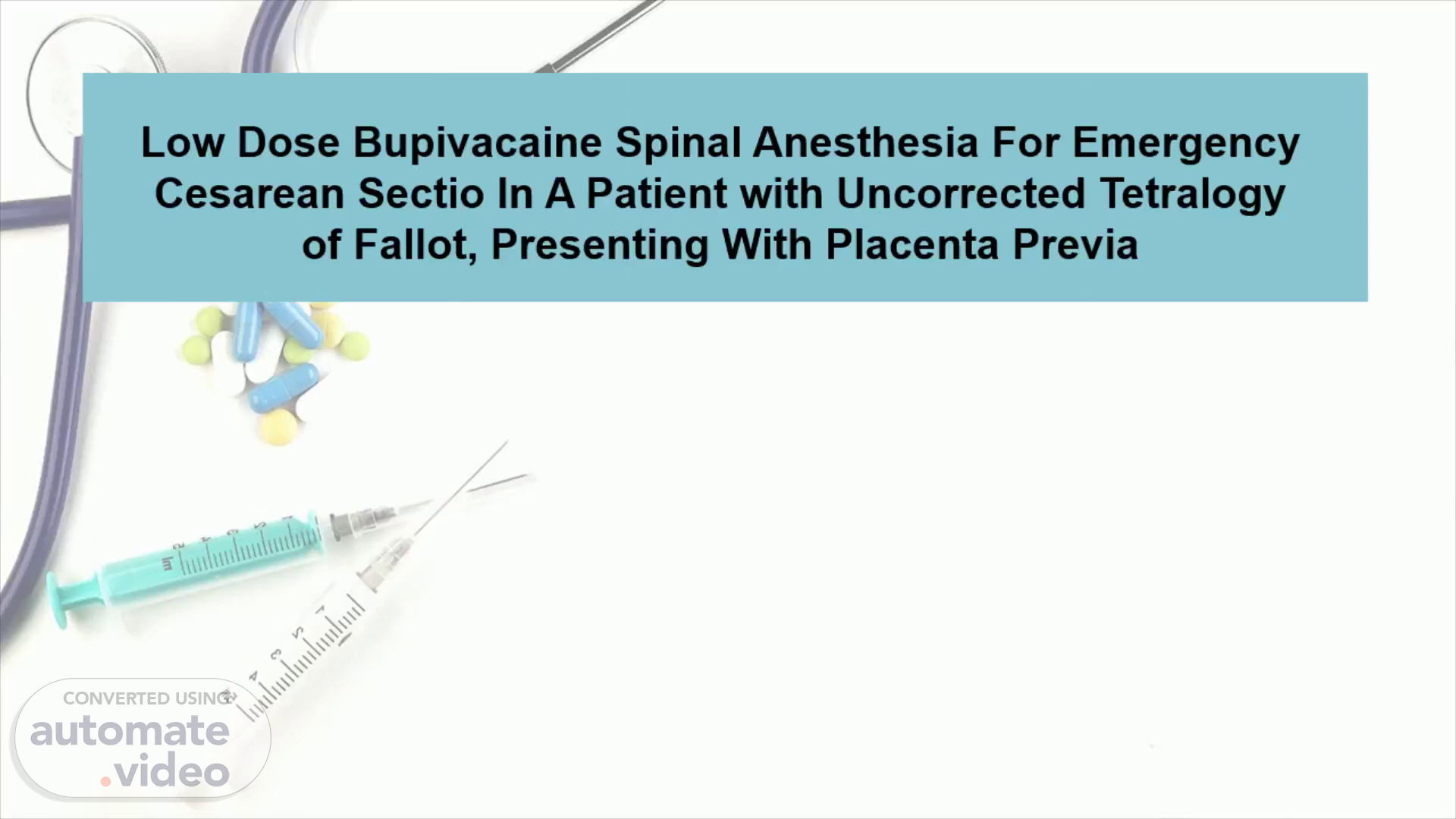
PowerPoint Presentation
Scene 1 (0s)
Low Dose Bupivacaine Spinal Anesthesia For Emergency Cesarean Sectio In A Patient with Uncorrected Tetralogy of Fallot , Presenting With Placenta Previa.
Scene 2 (30s)
Introduction. 01. TOF (5-6 % ) of congenital heart disease.
Scene 3 (1m 10s)
Case Report. A dmitted in emergency ward with complaint of vaginal bleeding with contraction and breathlessness on routine work..
Scene 4 (1m 41s)
Placenta Previa. In physical examination, she had clubbing finger grade IV , cyanosis peripheral and central.
Scene 5 (2m 31s)
Anesthetic management. L ow dose spinal anesthesia was given using 5 mg of hyperbaric bupivacaine and 25 μg of fentanyl in sitting position through L3-L4 interspace using spinocath 27 G into the subarachnoid space.
Scene 6 (3m 30s)
Anesthetic management. The patient was transferred to recovery room after surgery with stable hemodynamic and bromage score 2.
Scene 7 (4m 1s)
Discussion. Placenta Previa Blood loss. C olloid solution ( gelofusin ) used for co-loading and replace fluid loss caused by vaginal bleeding to prevent excessive vasodilation after spinal anesthesia.
Scene 8 (4m 42s)
Discussion. general anesthesia (GA) was considered a gold standard for managing anesthesia of patients with congenital heart disease (CHD).
Scene 9 (5m 12s)
Discussion. Fentanyl acts synergistically as an adjuvant with bupivacaine in lowering the pain threshold without increasing sympathetic blockade ..
Scene 10 (5m 44s)
Conclusion. Pregnancy can carry high risk in patient with congenital heart disease presenting with plasenta previa . If the patients require surgery, the choice of regional and general anesthesia adapted to the patient’s condition. Low dose spinal anesthesia combined with fentanyl as adjuvant can be considered as an alternative technique to general anesthesia, in selected parturients with uncorrected TOF presenting for cesarean section, especially in cases where the risks of administering a general anesthetic are deemed high. Postoperative patients with condition like this case should remain closely monitored to avoid possible worsening of the right-to-left shunt..